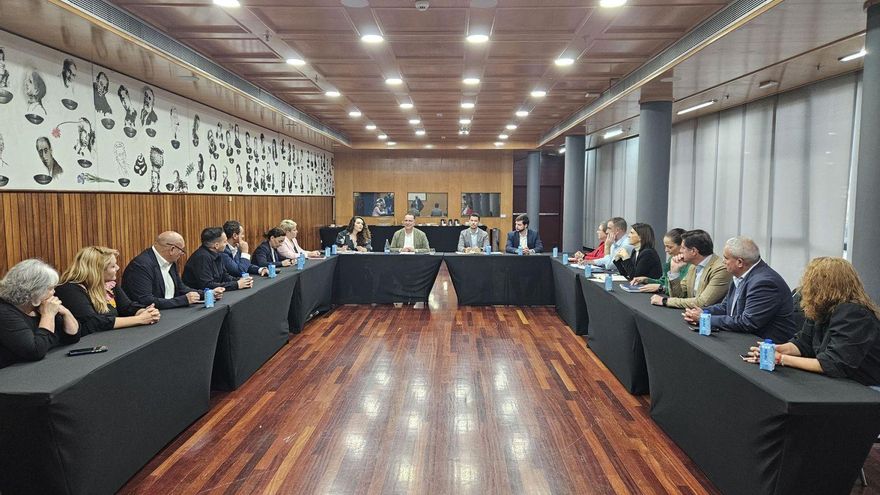
Poli Suarez, Minister of Education of the Government of the Canary Islandsrated the southern region of Tenerife as “the red zone of the entire Autonomous Community” in educational matters. He expressed this minutes before meeting with mayors and councilors, with whom he addressed the problems of over-ratio and difficulties in terms of infrastructure that affect the 12 municipalities.
At the meeting, the counselor announced a shock plan for Adeje, Arafo, Arico, Arona, Candelaria, Fasnia, Guía de Isora, Granadilla de Abona, San Miguel de Abona, Santiago del TeideVilaflor and Güímar (absent at the meeting). All of them make up a region that in recent years has seen its school population increase significantly, “which has a great impact on the educational infrastructure of the area.”
In addition to collecting the demands and proposals that the municipal authorities raised at the Hotel Escuela de Santa Cruz, the place chosen for this meeting, Poli Suárez listed to the mayors and councilors of the South the main actions proposed by the Ministry of Education to alleviate the situation, such as the study to reduce the student ratio as well as the insularization of Vocational Training. That is, adapt the subjects to the needs of each Island.
What’s going on
Suárez recalled that, at this time, in the region there are four new educational facilities which are in different phases: the Compulsory Education Centers (CEO) of Abades (Arico) and San Isidro (Granadilla de Abona), in both cases with the land donated by the town councils, but in the project drafting phase; the Las Chafiras Secondary Education Institute (IES) (San Miguel de Abona), whose works the San Miguel City Council hopes will begin shortly; and the Integrated Vocational Training Center (CIFP) of Adeje, which is completed and will enter service next year, as announced by the counselor last month at the parliamentary headquarters.
Education includes among its provisions the expansion of another dozen centers: the CEOs Andrés Orozco (Arafo) and Guajara (Fasnia), the IES Magallanes and El Médano (both in Granadilla de Abona), Ichasagua and Los Cristianos (Arona) and Serafín Pardo (Santiago del Teide), as well as the Education Center Infant and Primary School (CEIP) Abona, in San Isidro (Granadilla de Abona), in addition to the Secondary Education Institute Section (SIES) Arona.
Poli Suárez put on the table the possibility of studying that city councils offer land or spaces to create new centers or proceed to expand existing ones, with the purpose of alleviating the demographic pressure they endure.
Complementary actions
Among the measures announced, the counselor referred to fifty actions of different significance in centers of the 12 municipalities in the south of Tenerife (generic improvement, for the creation of Enclave classrooms, canteens, improvement of electrical installations, accessibility…) or the opening of the file for the installation of photovoltaic panels in seven centers distributed between Arona, Granadilla, Adeje, Santiago del Teide and Güímar, a equipment that will make these educational facilities more sustainable places.
To combat the heat, the installation of shades and roofs or the naturalization of spaces will also be carried out, which are some of the demands most demanded by the municipal representatives of southern Tenerife, as confirmed by the general director of Infrastructure and Equipment, Iván González, and the territorial director of Santa Cruz de Tenerife, Adrián Delgado, who also attended this meeting held at the Hotel Escuela de Santa Cruz de Tenerife.
In that sense, Poli Suárez recalled that last December, the Ministry of Education issued several resolutions to make extraordinary allocations with which centers that required urgent actions could improve their facilities. In the case of the Southern region, 23 centers that have already been provided with 207,730 euros will benefit from the measure to carry out these actions.















